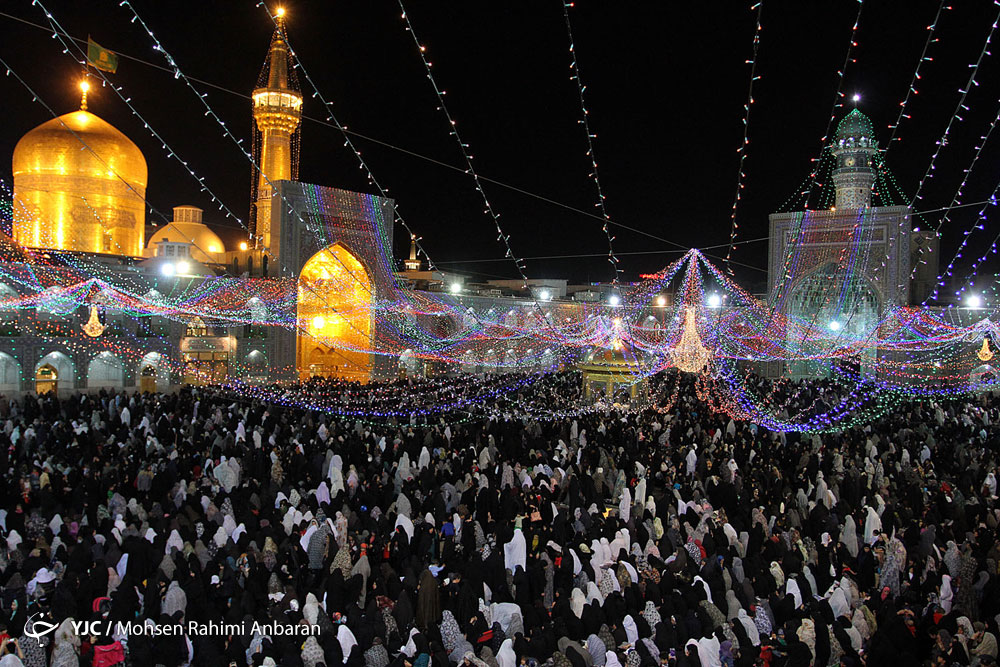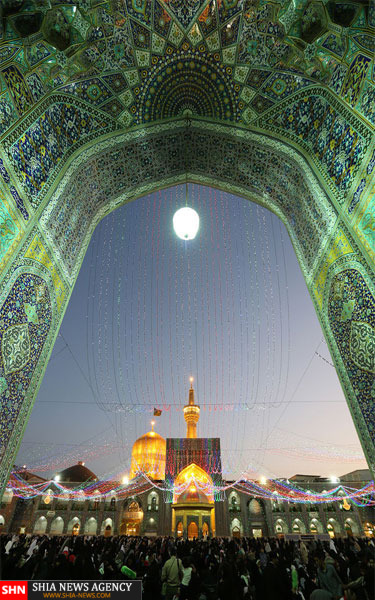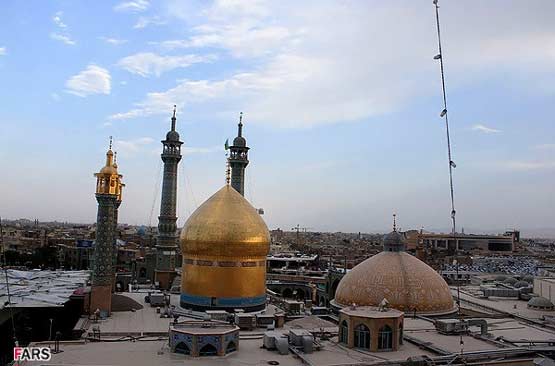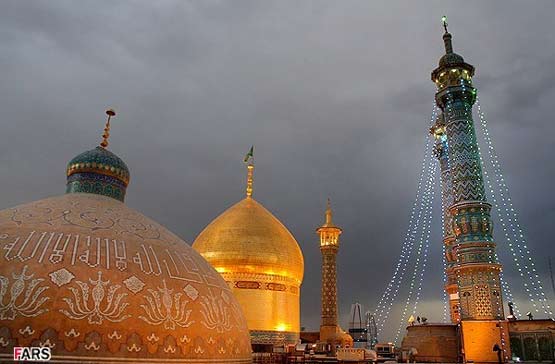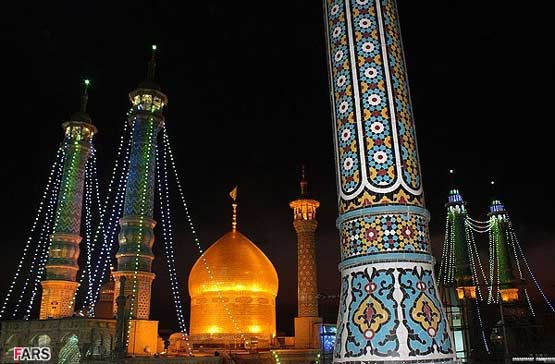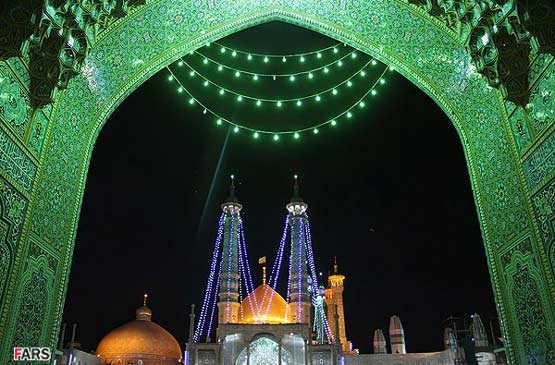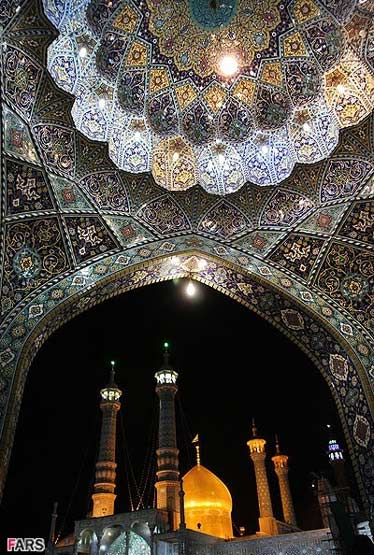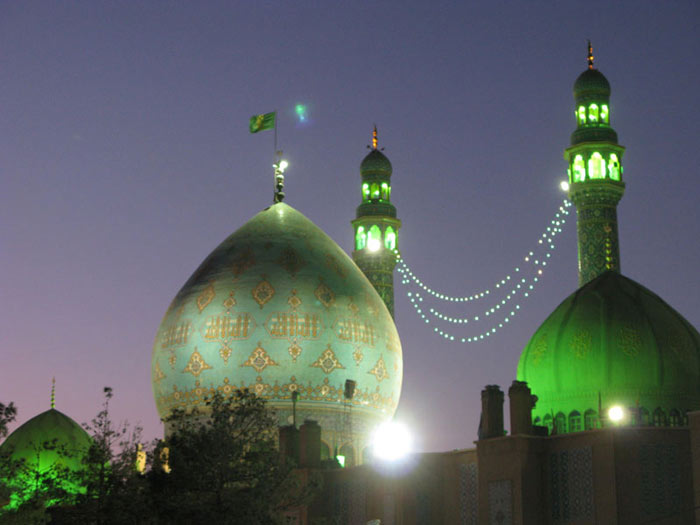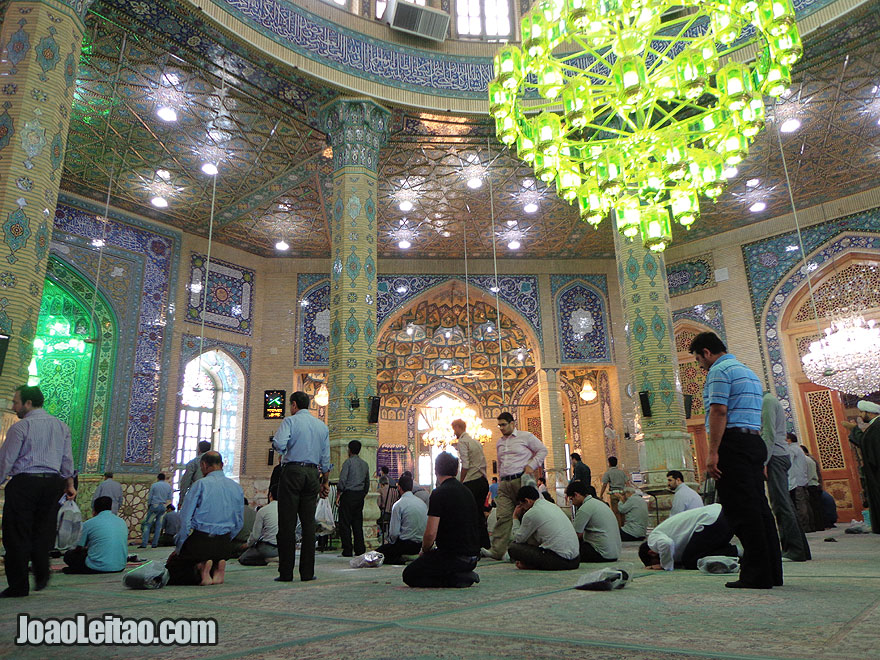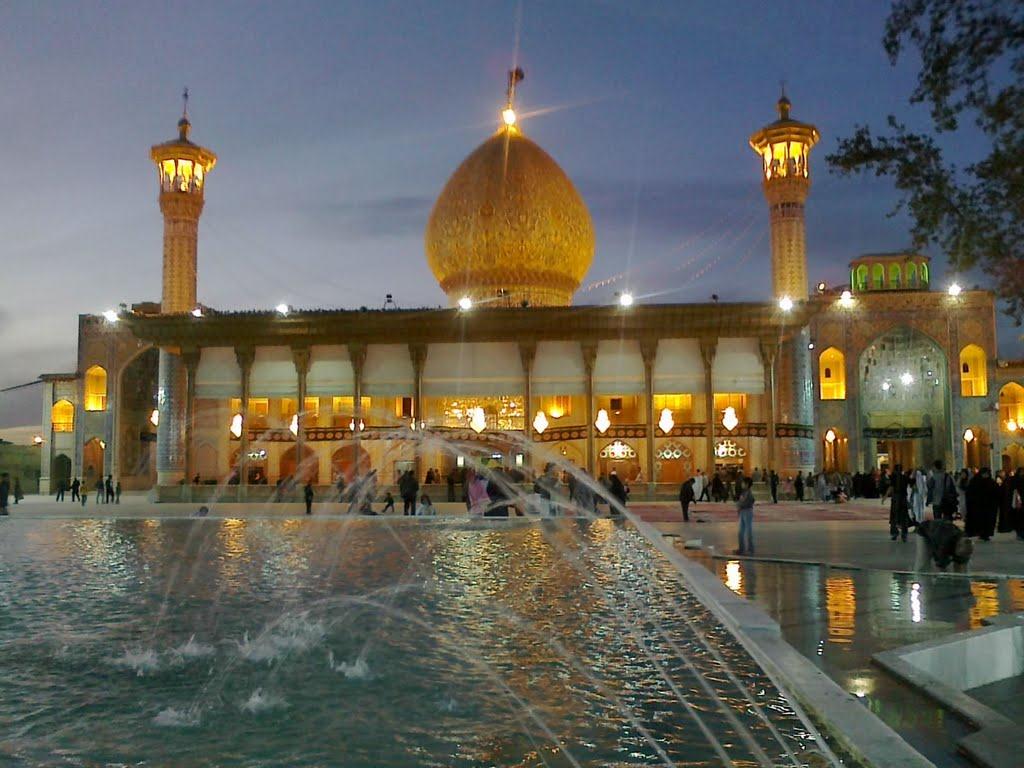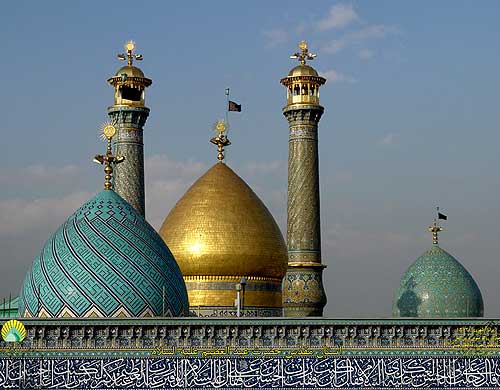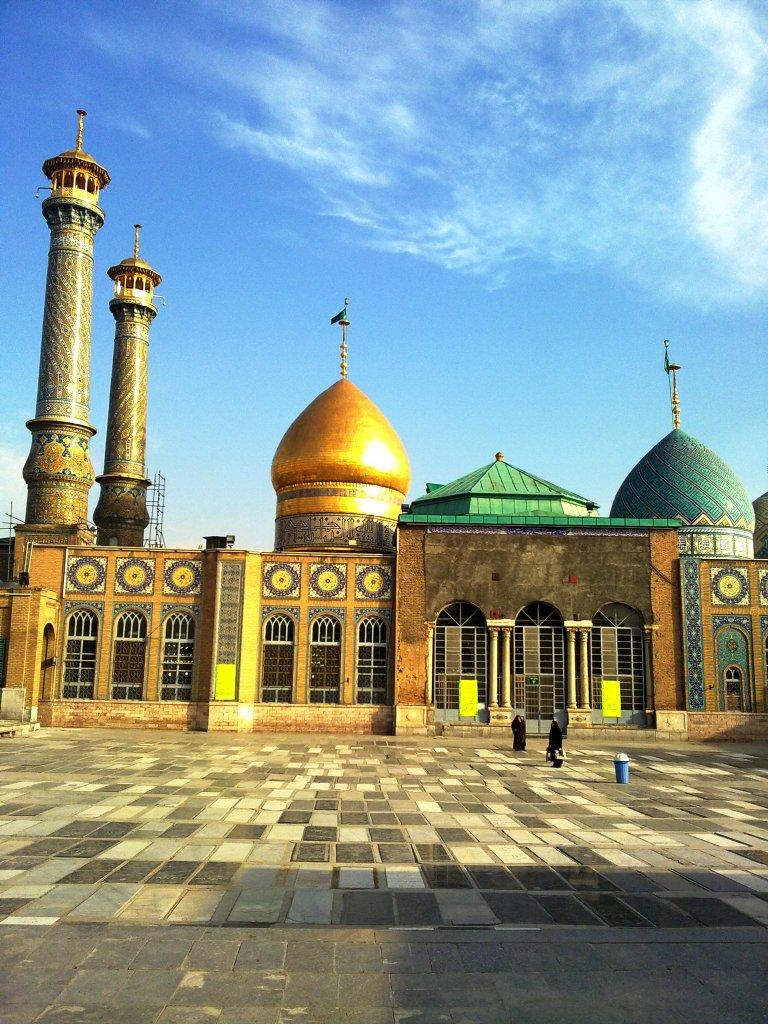Aramagedon
BANNED

- Joined
- Apr 29, 2015
- Messages
- 8,801
- Reaction score
- -13
- Country
- Location
People

Iran is a diverse country consisting of people of many religions and ethnic backgrounds cemented by the Persian culture. The majority of the population speaks the Persian language, which is also the official language of the country, as well as other Iranian languages or dialects which are spoken in some part of Iran such as Azeri dialect, Kurdish and Arabic language.Religion in Iran is dominated by the Twelver Shia branch of Islam, which is the official state religion and to which about 90% to 95% of Iranians belong. About 4% to 8% of Iranians belong to the Sunni branch of Islam, mainly Kurds and Irans Balochi Sunni. Zoroastrians, Jews, and Christians are also non-Muslim religious minorities who are living in Iran.
Culture

The Culture of Iran is a mix of ancient pre-Islamic culture and Islamic culture. Iranian culture has long been a predominant culture of the Middle East and Central Asia, with Persian considered the language of intellectuals during much of the 2nd millennium, and the language of religion and the populace before that.
The Sassanian era was an important and influential historical period in Iran as Iranian culture influenced China, India and Roman civilization considerably, and so influenced as far as Western Europe and Africa. This influence played a prominent role in the formation of both Asiatic and European medieval art. This influence carried forward to the Islamic world. Much of what later became known as Islamic learning, such as philology, literature, jurisprudence, philosophy, medicine, architecture and the sciences were based on some of the practices taken from the Sassanid Persians to the broader Muslim world.
The Iranian New Year (Nowruz) is an ancient tradition celebrated on 21 March to mark the beginning of spring in Iran. It is also celebrated in Afghanistan, Republic of Azerbaijan, Uzbekistan, Turkmenistan, Tajikistan, Kazakhstan and previously also in Georgia and Armenia. It is also celebrated by the Iraqi and Anatolian Kurds. Nowruz was registered on the list of Masterpieces of the Oral and Intangible Heritage of Humanity and described as the Persian New Year by the United Nations Educational, Scientific and Cultural Organization (UNESCO) in 2009.Read more
Nomads in Iran

Aryan tribes migrated into the Iranian plateau in the 2d millennium BC. There are over 1.5 million nomads in Iran today. Many of these tribes such as the Kurds, Bakhtiyaris (Bactrians), Lurs, Guilaks, and the Baluchs are descendants of the original invaders who came from Central Asia to settle in the Iranian Plateau.Most of the tribes of Central Iran are pure Aryan, while others such as the Arabs of Khuzestan and Khorassan, the Qashqai, the Turkmen, Shahsevan and Afshar tribes of Azarbaijan had ancestors who passed through Iran.By 1920 nomadic pastoral tribes were over a quarter of Irans population. Their number declined sharply as a result forced settlement in the 1920s and 1930s. Continued pressure as well as the lure of the cities and settled life has resulted in a further sharp decline since the 1960s.
The largest tribal groups are the Kurds, who live in the province of Kurdestan in the northern Zagros region, the Lurs and the Bakhtiari, who live in the southern Zagros region, the Qashqai in Fars, the Turkoman in the northeast, and the Baluch in the southeast.There are over one hundred different nomadic tribes today, each with its own dialect, style of dress and housing, and its own chief or leader.The Bakhtiari tribe, which numbered more than 1 million in 1997, inhabits an area of approximately 67,000 Km (25,000 Mi) that straddles the central Zagros Mountains. They speak a dialect of Persian called Luri, are Shiite Muslims, and about one third of the tribe is nomadic. Their migration is among the most spectacular known among nomadic pastoralists anywhere.The Qashqai are a Turkish-speaking tribe of pastoral nomads in southern Iran. They migrate between winter pastures near the Persian Gulf and summer pastures on the Iranian Plateau. The Qashqai have shown greater cohesion than most Iranian tribes.They numbered an estimated 790,000 in 1997.The Baluch, whose name means wanderers retain a semi-nomadic way of life today. They habitate the far south-east part of Iran, the Mokran region, and far West Pakistan, which is a desert region. The Baluch share a common identity based on Baluchi-an Iranian language-and adherence to Sunni Islam. They are famous for camel races and rugs.Many of the Ghashgha in Fars province are still nomadic.
The Lur are considered the most intact tribe, retaining their virility, robustness and tall stature. Mostly farmers and shepherds living in the Luristan area.
Guilaks are among the most original tribes of Iran who speak a pure Persian dialect.Afshars are pastoral nomads residing in the Azarbaijan and Hamadan region in the summers and the Caspian coast in the winter. The Shahsevans live in the northeastern Azarbaijan.The Khamseh (Arabic for five together) is a federation of five tribes of pastoral nomads in the province of Fars in southern Iran. The five tribes, numbering more than 75,000, are the Persian-speaking Arab and Basseri and the Turkish-speaking Ainalu, Baharlu, and Nafar. With their sheep and other livestock, the Khamseh nomads migrate semiannually across the Zagros Mountains between the low-lying valleys and plains close to the coast of the Persian Gulf and the high, summer pastures on the Iranian Plateau.Read more
History

The First inhabitants of Iran were a race of people living in western Asia. When the Aryans arrived, they gradually started mingling with the old native Asians. Aryans were a branch of the people today known as the Indo-Europeans, and are believed to be the ancestors of the people of present India, Iran, and most of Western Europe.Recent discoveries indicate that, centuries before the rise of earliest civilizations in Mesopotamia, Iran was inhabited by human. But the written history of Iran dates back to 3200 BC. It begins with the early Achaemenids, The dynasty whose under the first Iranian world empire blossomed.Cyrus the Great was the founder of the empire and he is the first to establish the charter of human rights. In this period Iran stretched from the Aegean coast of Asia Minor to Afghanistan, as well as south to Egypt. After Achaemenids, we witness about dozen successive dynasties reigning over the country, Dynasties such as Parthian, Sassanid, Samanid, Tahirid, Ghaznavid, Safavid, Zand, Afsharid, Qajar and Pahlavi. In 641 Arabs conquered Iran and launched a new vicissitudinous era. Persians, who were the followers of Zoroaster, gradually turned to Islam. Since Qajar dynasty on, due to the inefficiency of the rulers, Iran intensely begins to decline and gets smaller and smaller.
Handicrafts

Recent archaeological excavations have shed new light on the earliest arts of the Iranian plateau. These newly discovered prehistoric sites date back to at least 5000 BC, and handsome decorated pottery, some of which is eggshell thin, has been found in great quantities at sites dated 3000 BC and later.
Persian art and architecture reflects a 5,000-year-old cultural tradition shaped by the diverse cultures that have flourished on the vast Iranian plateau occupied by modern Iran and Afghanistan.Read more
Architecture

Building first evolved out of the dynamics between needs (shelter, security, worship, etc.) and means (available building materials and attendant skills). As human cultures developed and knowledge began to be formalized through oral traditions and practices, building became a craft, and architecture is the name given to the most highly formalized and respected versions of that craft.Architecture is integrate part of history, economy, social issue, culture and tradition of each society.Read more
Definition of Traditional Architecture in Iran

The architecture in Iran dates back to 5000 BCE to the present with characteristic examples distributed over a vast area from Syria to North India and the borders of China, from the Caucasus to Zanzibar. Persian buildings vary from peasant huts to tea houses, and garden pavilions to some of the most majestic structures the world has ever seen.Most important properties of traditional Architecture of Iran include: harmony with the nature and environment and take benefit from natural facilities of the location, harmony with the traditions of all provinces,Iranian architecture portray detail of life, beliefs, moral, ethic code and some other. The essence of traditional Architecture of Iran consists of math and theosophy. As, in ancient Iranian books architecture is named as alhaseb and almohandess.Motif of Iranian architecture has been its cosmic symbolism by which man is brought into communication and participation with the powers of heaven. This theme, shared by virtually all Asia and persisting even into modern times, not only has given unity and continuity to the architecture of Persia, but has been a primary source of its emotional characters as well. The traditional architecture of the Iranian lands throughout the ages can be categorized into the six following classes or styles.
Music

About the music of the Elamites not much is known; however, we know of a ruler of Susa who had musician at his temple gate about 2600 BC. There are also the bas-relief which shows musicians playing harps and tambourine. It is possible that there was not a lot of difference between Babylonian-Assyrian music and Iran at that time and the Persian names of tabire (drum) and karranay (trumpet) may be derived from names of the Akkadian tabbalu and qarnu.After the conquest of Alexander the Great when Hellenistic culture found expression in Persia, one might suppose that Greek derived the name of salpinx (trumpet) from Iranians. During Parthian period ( beginning 2nd century BC) when Aramaic became the official language, the word shaipur (trumpet) which is Semitic may be taken from Aramaic word.
Sassanian dynasty cherished music as shown on rock carvings of Taq-i Bustan which are two types of harp, trumpet and drums. Also, lute (ud), guitar (rubab) and pandore (tanbura) can be seen from other arts. One can name Barbad, Shirin, and Azada as famous musicians of this era. We also know that specific modes of music were used at certain hours of the day, week, and month, each for a particular purpose as a part of governmental procedure. After the Arab conquest, Arabic music became known in Iran. At the same time, Persian music influenced Arabic music. In the 10th century, Persian musicians became favorite at Arab court and the Persian lute was a favored instrument.
In the 9th century, the Khorasanian scale was introduced. The musicians played on Persian tanbur which became as popular as lute. The nay (flute), chang (harp), rabab (viol), and the nay-i siyah (reedpipe) were also common instruments at the time. Persian theorists were leaders in Arabian musical theory, for example, Al-Razi and Al-Sarakhsi. Ibn Sina mentions twelve principal modes of music:Rahawi, Husain, Rast, Busalik, Zangula, Ushshaq, Hijaz, Iraq, Ispahan, Nava, Buzurg, and Mukhalif (zirafgand). We know little about their formation. Four of modes mentioned above have Arabic names which may indicate Arabian origin. Ispahan was named as one of the ancient modes of Persia. There are also six secondary modes (avazat).
During Ghuri rulers and Khwarizmi (12th -13 th century) music grew. Two notable theorists of this era were Fakhr al-Din al Razi and nasir al-Din al Tusi. Another Persian theorist was Qutb al Din al-Shirazi who was famous for Pearl of Crown (Durrat al-taj). In the Treasure-House of Gift (Kanz al -Tahaf) an important work in 1350, ud (lute), rubab (guitar), mughni ( archlute), chang (harp), nuzha, qanun (psaltery), ghishak (spiked viol), pisha (fife) and nay-i siyah (reedpipe) are completely described. In other places, dutar ( two strings) and sitar (three strings) exquisite of poet Hafez are mentioned.
During Timuri Dynasty, Abdal-Qadir ibn Ghaibi lived who wrote The compiler of Melodies (Jami al-alhan) which is cherished in the Bodleian Library at Oxford. By the 14th and 15th century, twenty four branch modes (shuba) and forty eight derived modes (gusha) began, respectively. By the 17th century, there were twenty four of rhythmic modes (usul).
Under Safavid Dynasty, chartar (four strings) and sheshtar (six strings) musical instruments were invented. Ud (lute) and kamancha (spiked viol) were the most favorite instruments with addition of nay (flute) and daira (tambourine) as can be seen in a painting of Shah Safi court. Surnay (shawm), naqqarat (kettledrums), karna (long trumpet), duhul (side drum), and kus (kettledrum) were for military uses. Persian theory especially in nomenclature influenced Indian, Arabian, Turkish and Turkomanian music. Even China through Turkomans was affected by Persian instruments.
By the 19th century, ud (lute), rubab (guitar), qanun (psaltery) were not in use but santur (dulcimer) was still used. During the second half of the 19th century, three viols rumuz, madilan, and tarab angiz were introduced.
About the mid century, European influence found its way into Persia, mostly in military bands. In the early 20th century, Ali Naqi khan Vaziri a teacher, a composer and instrumentalist played an important role in reviving and advancing the native music of Persia. Vaziri gives the notation of most popular modes (avaz); Mahur, humayun, Bayat-i Ispahan, chahargah, shur, segah, nava, and bayat-i kurd. Pish dar amad is an introduction which prepares the listener for dastgah (melodic modes) which are the pieces to come. Today as in every generation young musicians are looking for ways to express themselves.

Iran is a diverse country consisting of people of many religions and ethnic backgrounds cemented by the Persian culture. The majority of the population speaks the Persian language, which is also the official language of the country, as well as other Iranian languages or dialects which are spoken in some part of Iran such as Azeri dialect, Kurdish and Arabic language.Religion in Iran is dominated by the Twelver Shia branch of Islam, which is the official state religion and to which about 90% to 95% of Iranians belong. About 4% to 8% of Iranians belong to the Sunni branch of Islam, mainly Kurds and Irans Balochi Sunni. Zoroastrians, Jews, and Christians are also non-Muslim religious minorities who are living in Iran.
Culture

The Culture of Iran is a mix of ancient pre-Islamic culture and Islamic culture. Iranian culture has long been a predominant culture of the Middle East and Central Asia, with Persian considered the language of intellectuals during much of the 2nd millennium, and the language of religion and the populace before that.
The Sassanian era was an important and influential historical period in Iran as Iranian culture influenced China, India and Roman civilization considerably, and so influenced as far as Western Europe and Africa. This influence played a prominent role in the formation of both Asiatic and European medieval art. This influence carried forward to the Islamic world. Much of what later became known as Islamic learning, such as philology, literature, jurisprudence, philosophy, medicine, architecture and the sciences were based on some of the practices taken from the Sassanid Persians to the broader Muslim world.
The Iranian New Year (Nowruz) is an ancient tradition celebrated on 21 March to mark the beginning of spring in Iran. It is also celebrated in Afghanistan, Republic of Azerbaijan, Uzbekistan, Turkmenistan, Tajikistan, Kazakhstan and previously also in Georgia and Armenia. It is also celebrated by the Iraqi and Anatolian Kurds. Nowruz was registered on the list of Masterpieces of the Oral and Intangible Heritage of Humanity and described as the Persian New Year by the United Nations Educational, Scientific and Cultural Organization (UNESCO) in 2009.Read more
Nomads in Iran

Aryan tribes migrated into the Iranian plateau in the 2d millennium BC. There are over 1.5 million nomads in Iran today. Many of these tribes such as the Kurds, Bakhtiyaris (Bactrians), Lurs, Guilaks, and the Baluchs are descendants of the original invaders who came from Central Asia to settle in the Iranian Plateau.Most of the tribes of Central Iran are pure Aryan, while others such as the Arabs of Khuzestan and Khorassan, the Qashqai, the Turkmen, Shahsevan and Afshar tribes of Azarbaijan had ancestors who passed through Iran.By 1920 nomadic pastoral tribes were over a quarter of Irans population. Their number declined sharply as a result forced settlement in the 1920s and 1930s. Continued pressure as well as the lure of the cities and settled life has resulted in a further sharp decline since the 1960s.
The largest tribal groups are the Kurds, who live in the province of Kurdestan in the northern Zagros region, the Lurs and the Bakhtiari, who live in the southern Zagros region, the Qashqai in Fars, the Turkoman in the northeast, and the Baluch in the southeast.There are over one hundred different nomadic tribes today, each with its own dialect, style of dress and housing, and its own chief or leader.The Bakhtiari tribe, which numbered more than 1 million in 1997, inhabits an area of approximately 67,000 Km (25,000 Mi) that straddles the central Zagros Mountains. They speak a dialect of Persian called Luri, are Shiite Muslims, and about one third of the tribe is nomadic. Their migration is among the most spectacular known among nomadic pastoralists anywhere.The Qashqai are a Turkish-speaking tribe of pastoral nomads in southern Iran. They migrate between winter pastures near the Persian Gulf and summer pastures on the Iranian Plateau. The Qashqai have shown greater cohesion than most Iranian tribes.They numbered an estimated 790,000 in 1997.The Baluch, whose name means wanderers retain a semi-nomadic way of life today. They habitate the far south-east part of Iran, the Mokran region, and far West Pakistan, which is a desert region. The Baluch share a common identity based on Baluchi-an Iranian language-and adherence to Sunni Islam. They are famous for camel races and rugs.Many of the Ghashgha in Fars province are still nomadic.
The Lur are considered the most intact tribe, retaining their virility, robustness and tall stature. Mostly farmers and shepherds living in the Luristan area.
Guilaks are among the most original tribes of Iran who speak a pure Persian dialect.Afshars are pastoral nomads residing in the Azarbaijan and Hamadan region in the summers and the Caspian coast in the winter. The Shahsevans live in the northeastern Azarbaijan.The Khamseh (Arabic for five together) is a federation of five tribes of pastoral nomads in the province of Fars in southern Iran. The five tribes, numbering more than 75,000, are the Persian-speaking Arab and Basseri and the Turkish-speaking Ainalu, Baharlu, and Nafar. With their sheep and other livestock, the Khamseh nomads migrate semiannually across the Zagros Mountains between the low-lying valleys and plains close to the coast of the Persian Gulf and the high, summer pastures on the Iranian Plateau.Read more
History

The First inhabitants of Iran were a race of people living in western Asia. When the Aryans arrived, they gradually started mingling with the old native Asians. Aryans were a branch of the people today known as the Indo-Europeans, and are believed to be the ancestors of the people of present India, Iran, and most of Western Europe.Recent discoveries indicate that, centuries before the rise of earliest civilizations in Mesopotamia, Iran was inhabited by human. But the written history of Iran dates back to 3200 BC. It begins with the early Achaemenids, The dynasty whose under the first Iranian world empire blossomed.Cyrus the Great was the founder of the empire and he is the first to establish the charter of human rights. In this period Iran stretched from the Aegean coast of Asia Minor to Afghanistan, as well as south to Egypt. After Achaemenids, we witness about dozen successive dynasties reigning over the country, Dynasties such as Parthian, Sassanid, Samanid, Tahirid, Ghaznavid, Safavid, Zand, Afsharid, Qajar and Pahlavi. In 641 Arabs conquered Iran and launched a new vicissitudinous era. Persians, who were the followers of Zoroaster, gradually turned to Islam. Since Qajar dynasty on, due to the inefficiency of the rulers, Iran intensely begins to decline and gets smaller and smaller.
Handicrafts

Recent archaeological excavations have shed new light on the earliest arts of the Iranian plateau. These newly discovered prehistoric sites date back to at least 5000 BC, and handsome decorated pottery, some of which is eggshell thin, has been found in great quantities at sites dated 3000 BC and later.
Persian art and architecture reflects a 5,000-year-old cultural tradition shaped by the diverse cultures that have flourished on the vast Iranian plateau occupied by modern Iran and Afghanistan.Read more
Architecture

Building first evolved out of the dynamics between needs (shelter, security, worship, etc.) and means (available building materials and attendant skills). As human cultures developed and knowledge began to be formalized through oral traditions and practices, building became a craft, and architecture is the name given to the most highly formalized and respected versions of that craft.Architecture is integrate part of history, economy, social issue, culture and tradition of each society.Read more
Definition of Traditional Architecture in Iran

The architecture in Iran dates back to 5000 BCE to the present with characteristic examples distributed over a vast area from Syria to North India and the borders of China, from the Caucasus to Zanzibar. Persian buildings vary from peasant huts to tea houses, and garden pavilions to some of the most majestic structures the world has ever seen.Most important properties of traditional Architecture of Iran include: harmony with the nature and environment and take benefit from natural facilities of the location, harmony with the traditions of all provinces,Iranian architecture portray detail of life, beliefs, moral, ethic code and some other. The essence of traditional Architecture of Iran consists of math and theosophy. As, in ancient Iranian books architecture is named as alhaseb and almohandess.Motif of Iranian architecture has been its cosmic symbolism by which man is brought into communication and participation with the powers of heaven. This theme, shared by virtually all Asia and persisting even into modern times, not only has given unity and continuity to the architecture of Persia, but has been a primary source of its emotional characters as well. The traditional architecture of the Iranian lands throughout the ages can be categorized into the six following classes or styles.
Music

About the music of the Elamites not much is known; however, we know of a ruler of Susa who had musician at his temple gate about 2600 BC. There are also the bas-relief which shows musicians playing harps and tambourine. It is possible that there was not a lot of difference between Babylonian-Assyrian music and Iran at that time and the Persian names of tabire (drum) and karranay (trumpet) may be derived from names of the Akkadian tabbalu and qarnu.After the conquest of Alexander the Great when Hellenistic culture found expression in Persia, one might suppose that Greek derived the name of salpinx (trumpet) from Iranians. During Parthian period ( beginning 2nd century BC) when Aramaic became the official language, the word shaipur (trumpet) which is Semitic may be taken from Aramaic word.
Sassanian dynasty cherished music as shown on rock carvings of Taq-i Bustan which are two types of harp, trumpet and drums. Also, lute (ud), guitar (rubab) and pandore (tanbura) can be seen from other arts. One can name Barbad, Shirin, and Azada as famous musicians of this era. We also know that specific modes of music were used at certain hours of the day, week, and month, each for a particular purpose as a part of governmental procedure. After the Arab conquest, Arabic music became known in Iran. At the same time, Persian music influenced Arabic music. In the 10th century, Persian musicians became favorite at Arab court and the Persian lute was a favored instrument.
In the 9th century, the Khorasanian scale was introduced. The musicians played on Persian tanbur which became as popular as lute. The nay (flute), chang (harp), rabab (viol), and the nay-i siyah (reedpipe) were also common instruments at the time. Persian theorists were leaders in Arabian musical theory, for example, Al-Razi and Al-Sarakhsi. Ibn Sina mentions twelve principal modes of music:Rahawi, Husain, Rast, Busalik, Zangula, Ushshaq, Hijaz, Iraq, Ispahan, Nava, Buzurg, and Mukhalif (zirafgand). We know little about their formation. Four of modes mentioned above have Arabic names which may indicate Arabian origin. Ispahan was named as one of the ancient modes of Persia. There are also six secondary modes (avazat).
During Ghuri rulers and Khwarizmi (12th -13 th century) music grew. Two notable theorists of this era were Fakhr al-Din al Razi and nasir al-Din al Tusi. Another Persian theorist was Qutb al Din al-Shirazi who was famous for Pearl of Crown (Durrat al-taj). In the Treasure-House of Gift (Kanz al -Tahaf) an important work in 1350, ud (lute), rubab (guitar), mughni ( archlute), chang (harp), nuzha, qanun (psaltery), ghishak (spiked viol), pisha (fife) and nay-i siyah (reedpipe) are completely described. In other places, dutar ( two strings) and sitar (three strings) exquisite of poet Hafez are mentioned.
During Timuri Dynasty, Abdal-Qadir ibn Ghaibi lived who wrote The compiler of Melodies (Jami al-alhan) which is cherished in the Bodleian Library at Oxford. By the 14th and 15th century, twenty four branch modes (shuba) and forty eight derived modes (gusha) began, respectively. By the 17th century, there were twenty four of rhythmic modes (usul).
Under Safavid Dynasty, chartar (four strings) and sheshtar (six strings) musical instruments were invented. Ud (lute) and kamancha (spiked viol) were the most favorite instruments with addition of nay (flute) and daira (tambourine) as can be seen in a painting of Shah Safi court. Surnay (shawm), naqqarat (kettledrums), karna (long trumpet), duhul (side drum), and kus (kettledrum) were for military uses. Persian theory especially in nomenclature influenced Indian, Arabian, Turkish and Turkomanian music. Even China through Turkomans was affected by Persian instruments.
By the 19th century, ud (lute), rubab (guitar), qanun (psaltery) were not in use but santur (dulcimer) was still used. During the second half of the 19th century, three viols rumuz, madilan, and tarab angiz were introduced.
About the mid century, European influence found its way into Persia, mostly in military bands. In the early 20th century, Ali Naqi khan Vaziri a teacher, a composer and instrumentalist played an important role in reviving and advancing the native music of Persia. Vaziri gives the notation of most popular modes (avaz); Mahur, humayun, Bayat-i Ispahan, chahargah, shur, segah, nava, and bayat-i kurd. Pish dar amad is an introduction which prepares the listener for dastgah (melodic modes) which are the pieces to come. Today as in every generation young musicians are looking for ways to express themselves.
Last edited:









































